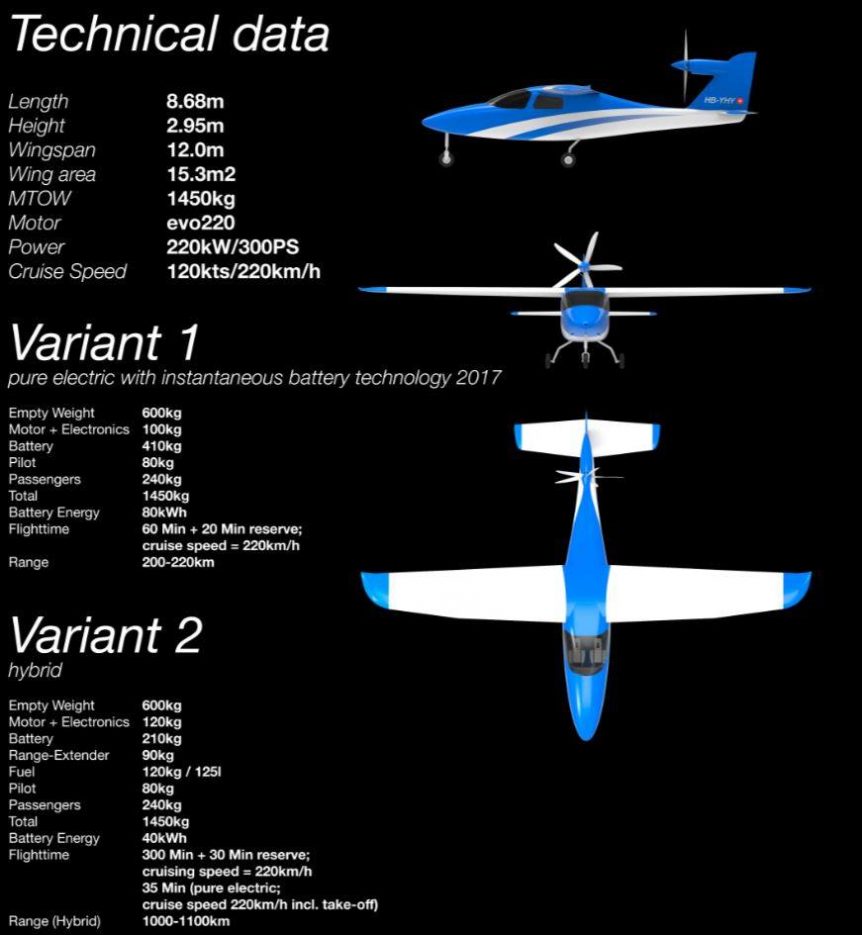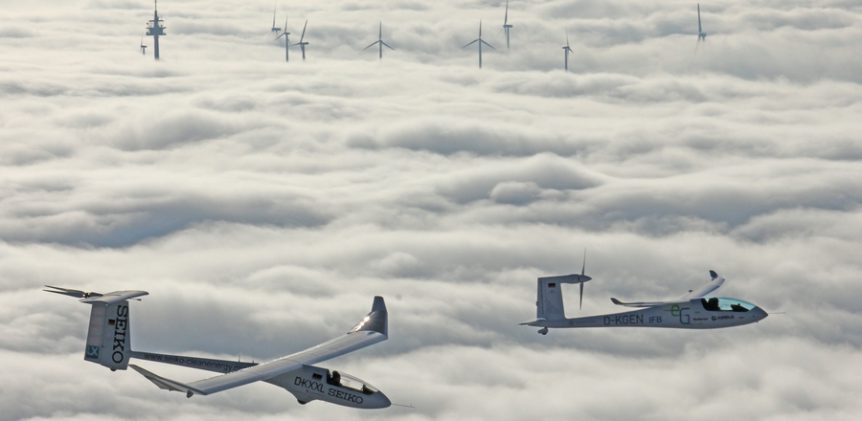Urs Villiger flew his Traveler TR230 four-seat touring craft about 10 years ago. He started revising the Cessna-like vehicle two years ago, turning it into a more aerodynamic and economical machine. His changes turned the Traveler into a hybrid aircraft and relocated the propeller to the vertical stabilizer. Reflecting professor Dipl.-Ing. Rudolf Voit-Nitschmann’s configurations he developed for Icare II and e-Genius, the low-drag placement of the drive motor near the top of the vertical fin confines the added drag caused by the propeller’s acceleration of air over the aircraft’s skin to the top-most part of the fin and rudder. Compare the area exposed to propeller blast to that of a conventional nose-mounted engine “tractor” type aircraft. On static display at this September’s Smart Flyer Challenge in Grenchen, Switzerland, the newly revised Traveler showed a streamlined nose fairing that holds a gas turbine (reported from a Panavia Tornado fighter’s auxiliary power unit (APU) attached to the UQM motor/generator. That unit charges …
e-Genius Gets Around Quickly, Inspires Others
Birds of the Same Tail Feather Configuration Prof. Dipl.-Ing. Rudolf Voit-Nitschmann (emeritus) had a lot to do with designing the 1996 Icare II solar-powered sailplane and the 2011 e-Genius. Icare II set several world records in its 20 years, most under the guidance of pilot Klaus Ohlmann. e-Genius won the award for being the quietest airplane at the Green Flight Challenge held in Santa Rosa, California, and was a close second to Pipistrel’s G4 in passenger miles per gallon (equivalent) energy use. Dipl.-Ing. Voit-Nitschmann was kind enough to explain to your editor how the propeller center came to be at the top of the tail on e-Genius. It’s a similar configuration to that on the Icare II*, and one he had found to provide the greatest undisturbed air to the propeller and the least added friction drag, since only the lower part of the blade crossed in front of the upper part of the vertical fin and rudder. This configuration …
Sunseeker III Becomes the Duo
Dropping a digit and its Latinate numeration, the recently renamed Sunseeker, a joint collaboration between Eric Raymond and a group of German, Swiss, Polish and Slovenian contributors, is showing progress towards its 2011 test flights. The 23-meter (75.46 feet) span solar-powered sailplane takes its wing from the Stuttgart Akaflieg Icare II, its fuselage from the Stemme basic profiles, is being built at least partially in Poland, and uses an electric motor designed by Slovenian native Roman Susnik, as noted in an earlier entry. The craft’s specifications provide evidence of the care employed in the design and construction of this lightweight marvel. A 75-foot wing aircraft weighing 270 kilograms (594 pounds) empty and 470 kilograms ( 1,034 pounds) when carrying two in its side-by-side cockpit is an achievement. Compare that to the 345 kg (765 pounds) empty weight and 550 kg (1,220 pounds) maximum weight of a “light” Piper Cub, with only a 36-foot, strut-braced wing. The 13.8 pounds-per-foot span loading (compare to the Cub’s 33.9 pounds-per …


